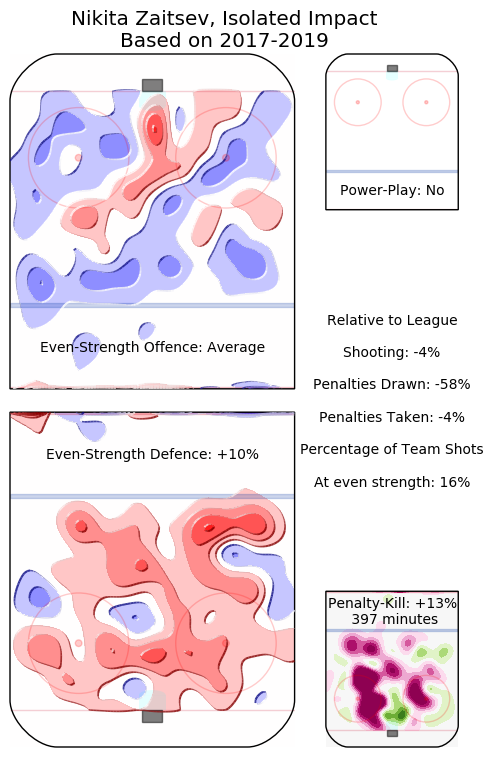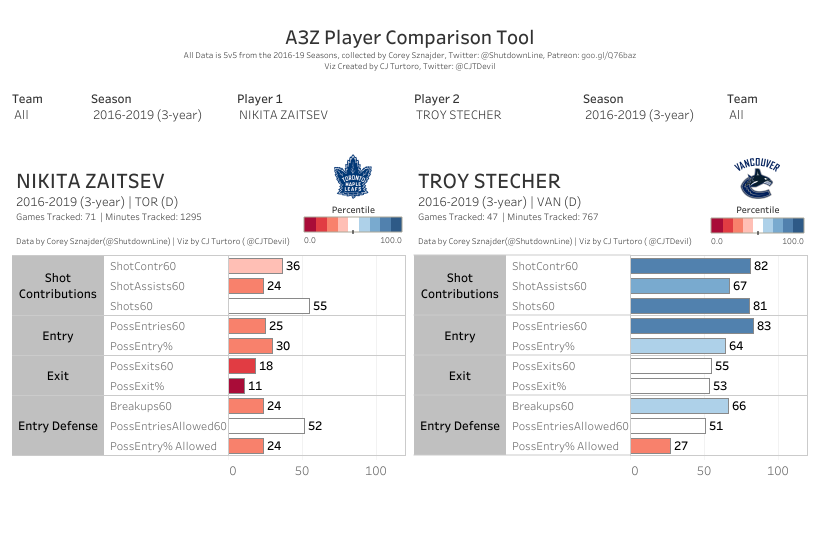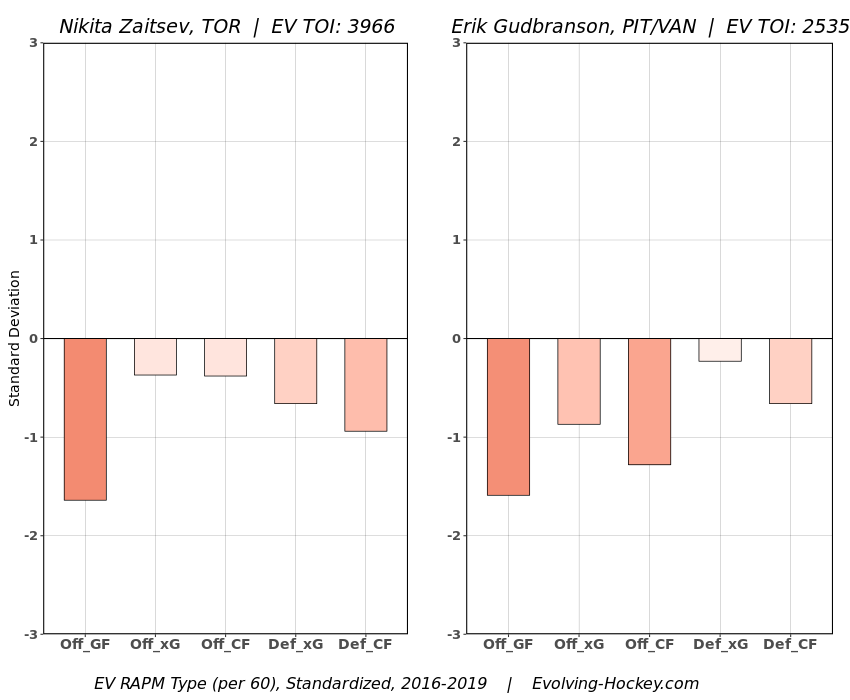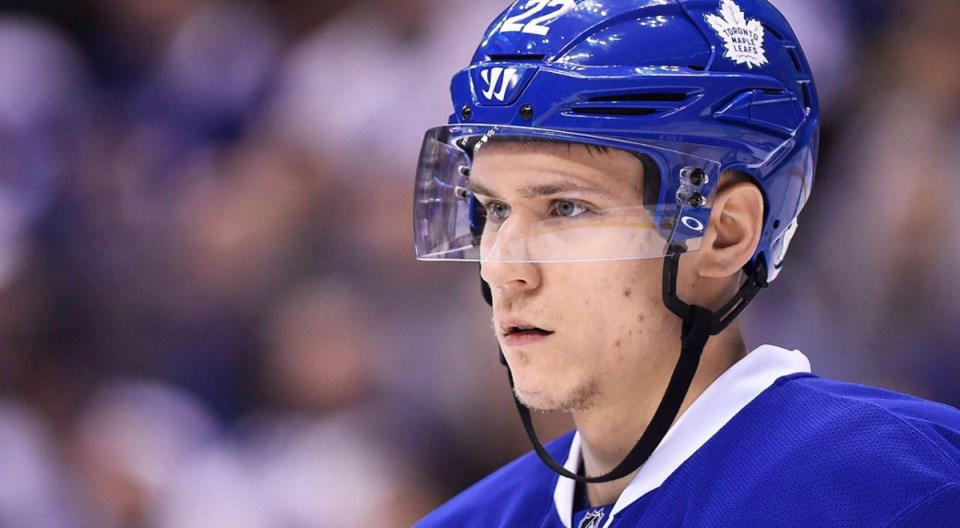The Vancouver Canucks have plenty of salary cap space. Oodles of it. Even with the Canucks needing to re-sign significant restricted free agents like Brock Boeser and Ben Hutton, and wanting to re-sign unrestricted free agent Alex Edler, they’ll still have room under the cap to add a new contract or two, whether in free agency or by trade.
The Toronto Maple Leafs, on the other hand, are sitting a little less pretty.
The Leafs have limited cap space and plenty of players to re-sign. NHL salary cap site CapFriendly estimates a little under $9 million in cap space available to the Leafs, which will quickly be eaten up by just one player: Mitch Marner. They also need to re-sign RFAs Kasperi Kapanen and Andreas Johnsson, which means they won’t be able to hang on to UFA Jake Gardiner.
Their salary cap situation makes the Leafs vulnerable to an offer sheet, but it also means they’ll want to shed some salary to make room for the players they want to keep. In this situation, the Canucks can weaponize their cap space and take advantage of the Leafs’ situation to acquire some additional assets along the way.
There’s one player, however, that shouldn’t enter into the picture, barring a sweetheart of a deal: Nikita Zaitsev.
Reports have been leaking out that the Canucks have expressed some interest in the right-side defenceman. Rick Dhaliwal reported that the Canucks have inquired about Zaitsev and that a source claimed their interest in Zaitsev is “high,” which was echoed by Elliotte Friedman, who rated their interest in Zaitsev as a “4” on a scale of 1-5.
Moving Zaitsev would clear $4.5 million from the Leafs’ salary cap, which wouldn’t entirely solve their cap conundrum, but would be an excellent start. It’s easy, then, to see why the Leafs would want to move Zaitsev. If the Canucks could convince the Leafs to include a couple assets along the way — a prospect, a pick, or a combination of the two — it might make sense.
There’s just one problem. Zaitsev’s $4.5 million cap hit goes for another five years. Zaitsev is signed through 2024 and even has a modified no-trade clause that kicks in next season.
It’s a bad contract and looked like a bad contract right from when it was signed. Of course, that’s the point of weaponizing cap space: taking on a bad contract for a price. The issue is the length of the contract.
If the Canucks want to weaponize their cap space, they should be looking for players on short-term deals. Ideally, you’re looking for players with a significant cap hit for just one year. That player could be causing some serious salary cap issues for their current team, likely because they need to re-sign a star player.
The Leafs have just such a player: Patrick Marleau, who is signed for one more year at a cap hit of $6.25 million, but has seen his quality of play drop off significantly. Taking Marleau’s cap hit for the price of a draft pick would make sense. The only issue is Marleau has a full no-movement clause and could block a trade to a non-Cup contender like the Canucks, but there are other players on short-term deals on other teams that would make sense for the Canucks: Ryan Biech delved into some potential options for The Athletic.
The Canucks could maybe, at most, take on a player on a three-year deal, but even that gets dicey with Elias Pettersson and Quinn Hughes needing new contracts in that third year. What you’re looking for is to take on a bad short-term contract and get some long-term assets — picks and/or prospects — in the deal.
The last thing you want to do when weaponizing your cap space is to tangle up your cap in the future with a long-term deal.
Here’s the fundamental issue: there are very few assets that could be added to a Zaitsev deal that would make it palatable for the Canucks. Kasperi Kapanen and Andreas Johnsson are good players — either would be a good target for an offer sheet — but the length of Zaitsev’s contract makes acquiring them in a trade hard to swallow.
The assets that would make it worthwhile for the Canucks would be ones that the Leafs wouldn’t want to lose. One Toronto-based analyst, former NHLer Anthony Stewart, suggested a Zaitsev trade involving William Nylander and Brandon Sutter. Sure, if that’s on the table, acquiring Zaitsev definitely makes sense for the Canucks, but let’s be realistic.
TOR ------> Zaitsev, Nylander + 3rd
— Anthony Stewart (@StuMunrue) June 4, 2019
VAN <-------- Tanev, Roussel ,Sutter pic.twitter.com/Yr8OU85DCy
There’s another alternative, however, that’s even more concerning. The Canucks might be interested in Zaitsev not to weaponize their cap space, but because they think Zaitsev is actually a good defenceman that fits their needs on the right side.
If that’s the case, the Canucks might actually look to trade legitimate assets for Zaitsev. That would be bad, because Zaitsev is, well, bad. To be more specific, he’s not good.
Zaitsev didn’t look too bad in his rookie year, tallying 36 points, largely on the back of a strong performance on the power play. That’s how he got his now-troublesome contract. There were warning signs in that season, however, that suggested he wouldn’t be worth that new contract and the following two years confirmed it. His points dropped off and his defensively play became harder to ignore.
If we look at Zaitsev’s heat map from Hockey Viz over the last three years, we see a pretty distinct pattern: Zaitsev is just average offensively, but struggles mightily on defence. To be fair to Zaitsev, he was used in a shutdown role last season, but since these heat maps adjust for such usage, it’s hard to give him too much of a pass.

Simply put, these are disastrous defensive numbers and they’re reflected by distinct struggles on the penalty kill to go with it. At best, you could suggest he’s been misused and needs to be in a more offensive role, but acquiring him on that basis would be a significant gamble.
When you look at micro stats tracked by Corey Sznajder, we can see some of the issues that result in his struggles.

Zaitsev struggles to move the puck out of the defensive zone, landing in the 11th percentile among NHL defencemen in zone exits with possession. That’s dreadful and reflects reports from Leafs writers that frequently complain of missed stretch passes that result in icings.
Zaitsev also has issues with preventing zone entries, failing to break up plays at the blue line and allowing a high percentage of zone entries with possession.
In the offensive zone, Zaitsev doesn’t contribute to many shots, taking an average amount himself, but not providing many shot assists. In other words, he simply doesn’t distribute the puck well, either from his own end or in the offensive zone.
Some Canucks fans have compared Zaitsev to Gudbranson, which makes a certain amount of sense. It would be a shame to add another defenceman on a bad contract after Benning did will to get rid of one during the season. Zaitsev and Gudbranson, however, have different issues. Zaitsev is better offensively, but worse defensively.

All this is to say, it would be a big error to mistake Zaitsev for a good defenceman. In pretty much every way measurable by numbers, Zaitsev is bad, and it’s not like the eye test does him any favours. He’s a third-pairing defenceman with a bad contract.
Zaitsev isn’t all bad, mind you. He did call Don Cherry a “clown” recently, which is a plus.
Perhaps the Canucks could acquire Zaitsev with an eye towards buying him out, but even that would be tough: he would cost a little over $1 million against the cap through 2029 and, during years where he has a significant signing bonus, he’d cost over $3 million against the cap. Those two years would be 2022-23 and 2023-24, at which point Elias Pettersson, Brock Boeser, and Quinn Hughes will all have expensive new contracts and the Bo Horvat will need to be re-signed.
That’s a decent chunk of change for a player not in the lineup and, again, it would require a significant asset coming from the Leafs in order for that to make sense. I just don’t see that happening.



